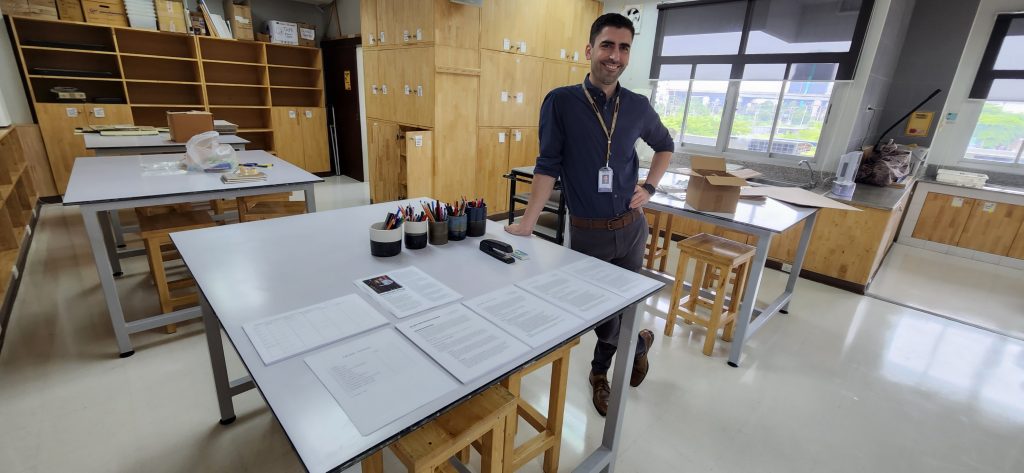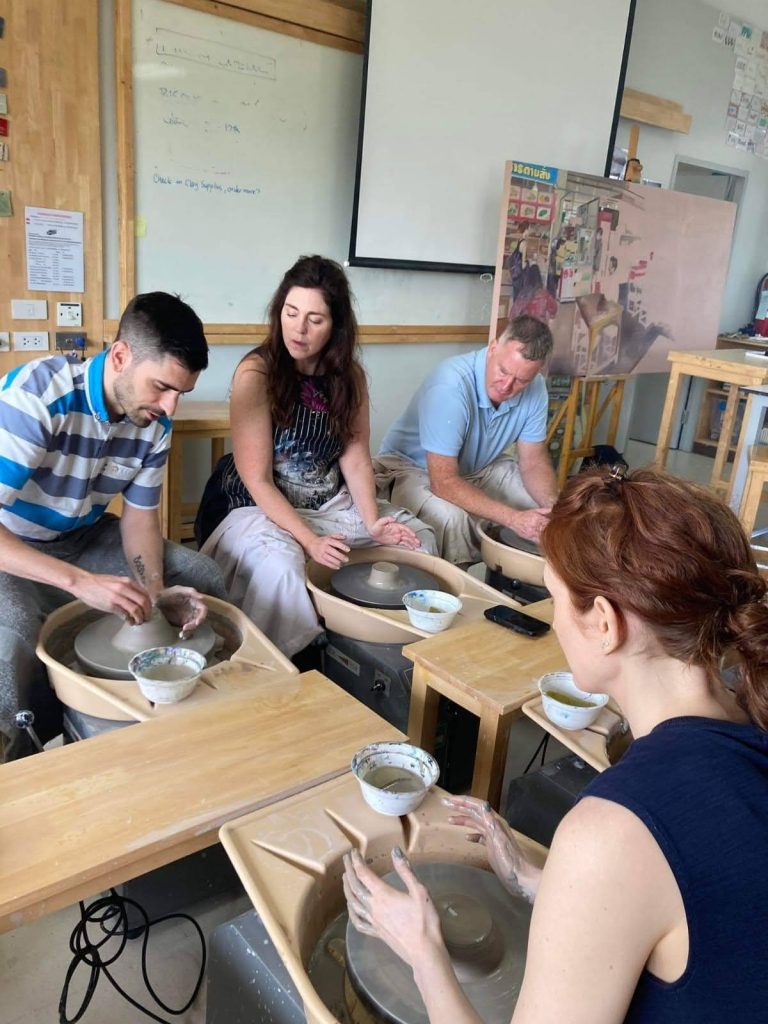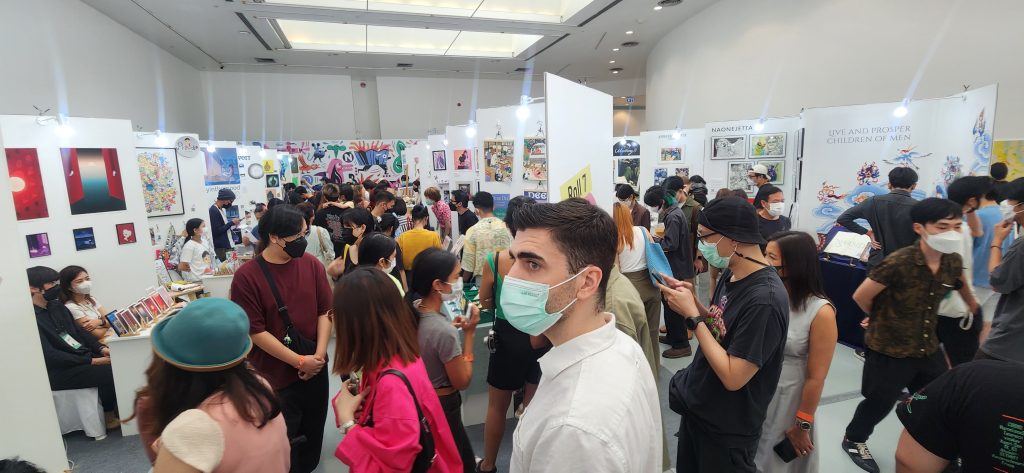
Philosophy of Art Education
Jonathan Preg, Spring 2019
I believe that all students were made in God’s image to be co-creators with Him in the world. As His children, we have an innate understanding of aesthetic beauty and a deep longing to stand in awe, but, because of sin, we have lost our ability to do so. My role as an art teacher is to give language and structure to those unformed impulses, water the seeds of aesthetic curiosity, and nurture creative exploration. One of the overarching themes of scripture is a journey from the garden to the city. Man is to create order, structure, meaning, and cultural flourishing in an untamed yet abundant land. We are all uniquely gifted and called to contribute to that journey.
As a Christian educator, I compliment the family and the church in training up young women and men. My discipline is one part of a well-rounded academy of knowledge, whose study will develop thoughtful, curious, patient, compassionate, honorable, and successful graduates. Education should develop women and men who are literate, articulate, and creative problem solvers. People who will be able to contribute to their economic, social, and spiritual communities through hard work, service, and compassionate justice.
The art classroom must be a safe and chaotic place. It is chaotic because this world is chaotic. God reached down to earth and formed us out of dust. We reach into the mud and ash to form beauty out of chaos. Our clay vessels and charcoal drawings are pale imitations of God’s creation, but they reflect something of the beauty He called “good” on those first days. The classroom must be a safe place, because creating requires that you risk something of yourself. I can place the brush in the student’s hand, but they must put the paint to the canvas and pass through the crucible of failure. I will walk beside them with patient affirmation and articulate direction, but I can only create the environment for learning.
An education in the Fine Arts is, most importantly, an education in visual literacy. For some students, the ability to communicate through images and artistic traditions will be like learning to speak for the first time. For most students in our media-saturated culture, the ability to read an image and understand how it was designed to influence, persuade, or deceive will be an invaluable 21st-century skill.

Artistic Skills Taught
- Drawing
- Graphite and Charcoal
- Pen and Ink
- Figure and Live Models
- Still Life
- Conceptual Drawing
- Painting
- Traditional Oil Painting
- En Plein Air
- Portraiture
- Acrylic, Gouache, & Watercolor
- Graphic Design
- Adobe Creative Suite
- Logo Design and Branding
- Typography and Layout
- Animation
- Art Direction
- Ceramics
- Handbuilding
- Pottery Wheel
- Clay Recycling and Processing
- Glaze Making and Chemistry \
- And many more!
- Collage and Paper Craft
- Photography and Darkroom
- Sculpture, Paper Mache
- Woodworking
- Studio Management
- Etc… haha!
Current Courses
Intermediate 2D Design – Students explore the principles of design using a variety of 2D art media and the art studio habits. Focus is on visual communication, composition, and the use of visual space. Students will practice art & design vocabulary in their critiques of both student and professional artwork.
Intermediate 3D Design – Students will continue to explore three-dimensional media through the elements and principles of design, with special emphasis on the aspects specific to it such as form, texture, and space within the work. Class time will be used to explore several types of three-dimensional media – additive and subtractive sculpture, ceramics, industrial design, and found objects – and the creative concepts of scale, usability, experience, and engagement of physical space. Students will gain a more extensive art-related vocabulary and evaluate each other’s work through classroom critiques.
Intermediate Drawing – Students explore two-dimensional media focusing on mark-making while continuing to incorporate the elements and principles of design. The class time will be used to study different mediums such as pencils, charcoal, watercolor paint, and acrylic paint. Special emphasis will be placed on drawing from observation. Students will gain a more extensive art-related vocabulary so that they can effectively discuss and write about the visual arts. Students evaluate others’ work through classroom critique.
Advanced Art Studio – This is a repeatable, self-directed studio art course for those students who have shown a high level of initiative and interest in the visual arts and wish to explore more advanced materials, techniques, and processes. Students apply for the course by developing a project proposal and plan of study that structure their learning for the semester. Research, experimentation, and design guide the creative process; while, regular deadlines, group critiques, and a strong emphasis on writing add an additional level of academic challenge.
Marketing Design Studio – Students will explores the practical applications of 2D Design in a Graphic Design context. It is an ideal course for students who are interested in practicing their artistic skills through the related field of visual communications. This course engages students with real-world design problems from a business setting and challenges them to develop practical solutions. In this course, students will develop a brand identity and visual communications strategy for a company they create as well as explore the software and skills necessary to be a Graphic Designer.
AP Art and Design – A year long course that presents an inquiry-based approach to learning about and making art. Students are expected to conduct an in-depth, sustained investigation of materials, processes, and ideas. The framework focuses on concepts and skills emphasized within college art and design foundations courses with the same intent: to help students become inquisitive, thoughtful artists and designers able to articulate information about their work. AP Art and Design students develop a portfolio of work to submit to the College Board and apply skills of inquiry and investigation, practice, experimentation, revision, communication, and reflection.
“Anytime I see you in front of the class, teaching a skill or modeling a technique, the ways that you’re able to guide students in accessible, effective ways is so impressive to me. You seem to have a knack for intentional differentiation. Your classroom always feels warm and inviting, and I’ve seen you be very purposeful in inviting those students who might be inexperienced or lack confidence to try new things and find joy and new depth in art.”
– Mark Cooprider, Assistant Principal
